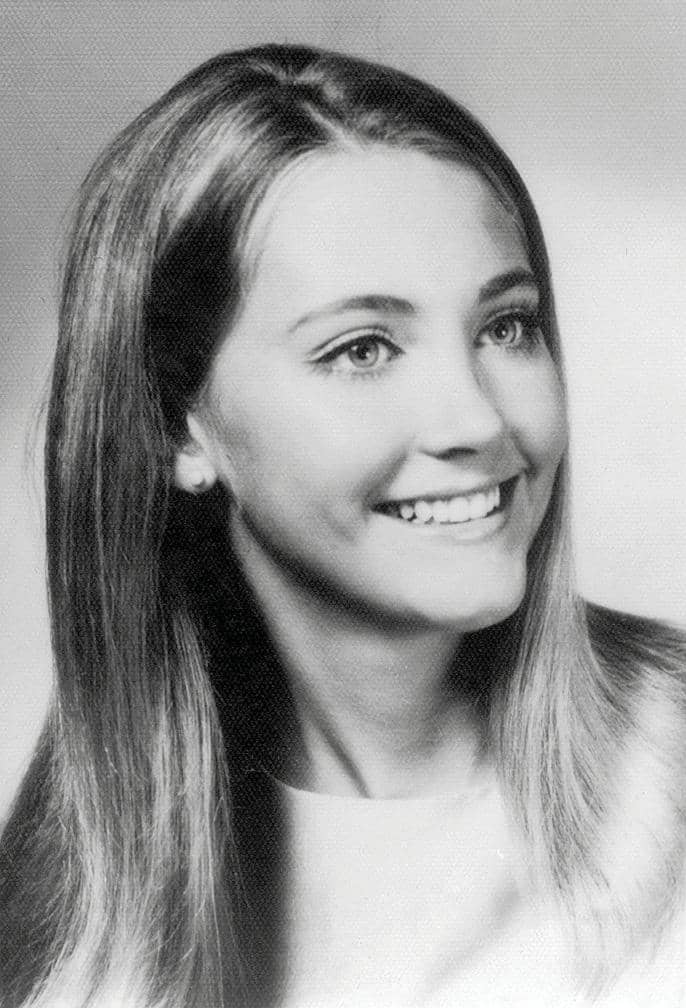Today we take on the genre YOU SHOULD BE FOCUSING ON if making money is your priority as a screenwriter.
Genre: True Crime
Premise: Set in 1981, a serial killer kidnaps his latest victim, who proceeds to use religion to convince him that he is not the killer he has accepted himself to be.
About: Huge bidding war for this one that Amazon/MGM just won. It was an article in Vanity Fair. Stephen Morin’s killings are mostly forgotten over time due to several reasons, one of them being that the victim in this story, Margy Palm, wasn’t interested in selling the rights to her story to Hollywood, who she felt would turn it into some cheap surface-level story about the power of God. Only recently having gone through therapy, Palm has come to the conclusion that it’s finally time that her story be told.
Writer: Julie Miller
Details: About 6000 words long (the length of 4 Scriptshadow posts)
 Sydney Sweeney is perrrrrrfect for this role.
Sydney Sweeney is perrrrrrfect for this role.
What is it that Jerry Maguire said on that fateful day of his firing?
Oh yeah.
SHOWWWW MEEEE THE MONAAAAAAAYYYY!!!
Ever since the spec boom ended, screenwriters have been looking for a substitute source of instant income, a way where they could write something and get paid for it immediately. Well, my friends, that something is here. It’s called True Crime.
True Crime has always sold. Heck, they were making these things as TV movies all the way back in the 70s. But ever since podcasts supercharged the genre, True Crime has become more marketable than ever.
From The Watcher to Dirty John to Love & Death to The Staircase to The Act to Mindhunter to Dahmer. And now you have this whole new sub-genre of shows inspired by true crime, like Only Murders in the Building, Based on a True Story, and The Afterparty.
Without mincing words, you have to be more into television than movies if you want to sell one of these things. But it actually doesn’t matter because, in order to sell them, you’re going to write an article first. Whoever then buys the article will decide if they want to turn it into a movie or a TV show.
“True Crime: True Faith,” set in Texas in 1981, introduces us to Stephen Morin, a serial killer who seems to have escaped mainstream attention due to the fact that he was killing at the same time as the much flashier hipper serial killer, Ted Bunny.
Morin targets a young pretty blonde wife named Margy Palm, who’s returning to her car from K-Mart after doing some Christmas shopping. At this point, Morin had raped and killed dozens of women, something Palm wasn’t yet aware of. But she knew once he took her hostage that he was an angry dangerous man.
And yet, as he made her drive outside of San Antonio to a more secluded area to do who knows what with her, Palm didn’t feel afraid. A religious woman, she began explaining to Morin that he had the devil inside of him and during the many times when they’d park (Morin would get hungry, for example, and randomly head to some fast food restaurant) she would attempt to cast the demons out of his head.
At first, Morin was furious that he’d been stuck with some “religious freak.” But the more Palm spoke about God, the more sense it made to the killer. Palm busted out some scripture for Morin to read and soon, the two were sharing deep intense experiences from their pasts, bonding on a level that even Palm admits, to this day, she had never experienced before.
After 8 hours of driving around, Palm had successfully converted Morin into a born-again Christian. His lifelong anger had all but evaporated. She told him that there was a preacher he needed to visit in another part of Texas and took Morin to the train station so he could go to this man and confess his sins. She gave him her scripture and off he went. The police were waiting for him at the station where he was still reading the scripture.
Morin would later go on to receive three life sentences and the death penalty. But Morin started to call Palm from prison and, unthinkably, the two became friends. Palm would come to see him 15 times over the next four years and visited him a day before his execution. Morin called those last four years the best four years of his life because he found God.
 The real Margy Palm
The real Margy Palm
Time to start writing some true crime articles, right!
I know some of you are like, “ehhh, I don’t know. I just want to write scripts, Carson. I don’t want to write short stories or articles or any of that nonsense.” I get it. We writers are creatures of habit. But let me say this. One of the things I would’ve changed when I was a young screenwriter was not being so stubborn. I thought I knew how to do it and I was only going to do it that way. I know that if I was more open to other ideas and trying new things, my path would’ve been different.
There’s a reason these articles are selling beyond them being true crime. Much like short stories, they’re easily digestible to busy industry people. Which means that when agents send these packages out, people are more willing to read them because the time investment is much smaller.
So, how do you find a good true crime story to write about?
It’s not that different from looking for any concept. You’re looking for fresh angles that haven’t been explored yet. You’re looking for interesting characters, meaty parts that actors would want to play. And as I tell you all the time, you’ve discovered a gold mine if the true crime story has some element of irony to it.
One particular sentence stuck out to me in this article. “I became friends with a serial killer.” Take a good long look at the line. That line is the face of irony. You’re not supposed to be friends with a serial killer. Serial killers are evil. Especially ones who wanted to kill you. And yet that’s the primary relationship here – one where this offbeat friendship emerges from the most unlikely of circumstances.
I can imagine how they might adapt this into a TV show. You start off with this scene in prison where Palm has come to visit Morin. We don’t know who these people are yet or the context under which they know each other. But they’re laughing. They’re having a good time. And then we smash-cut back to that fateful day where he grabs her in the parking lot and forces her into the car.
You could have a lot of fun juxtaposing those two worlds. And, actually, you could write this as a movie as well, if you wanted. Any time you see a tight timeframe, that’s ideal for a film. That 8 hours that Morin kidnaps Palm for… that’s a perfect timeframe for a movie, especially if you could convince us that she really was in danger and that he’s going to kill her.
But this one comes back to the characters. Good memorable characters are sooooooooo hard to write. They’re so hard to write. It amazes me whenever one shows up in a movie. And it shocks me when one shows up in a screenplay, where you’re even less likely to run into well-written characters.
Morin goes through this clear arc as a character that is perfect for a story. But he’s also volatile. The article points out that one second he’s sharing his biggest regrets to Palm and the next he’s screaming at her for being rich and having a perfect life. Then you have Palm, who’s the perfect underdog. She’s the overmatched girl who should die just like the 30 girls before her. But she’s ACTIVE and takes a different tactic than you’re supposed to take. And it ends up working and… who’s not going to root for that character?
Also, the same rule for storytelling applies today as it did 100 years ago: If you have at least one dead body, you’ve got yourself a story.
[ ] What the hell did I just read?
[ ] wasn’t for me
[xx] worth the read
[ ] impressive
[ ] genius
What I learned: So many writers revert to guns and violence for their characters to solve problems. But I promise you that it is ALWAYS more satisfying to the audience and to the reader if the character OUTWITS their opponent. That’s what this story is about. It’s about a woman who outthinks her captor.

